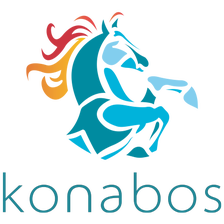The Non-Obvious SaaS Features You Need To Consider
Mike Edwards - Technical Director
4 May 2022
You are moving to a CDXP, and you have selected a new SaaS product. You looked at features list of the sales page and loved it, the price looks good, now it is time to get out the credit card and sign up.
STOP, before you do have you considered everything?
In this post, I am going to explore some of the other aspects that you should consider when assessing a SaaS offering. These areas focus on what it will be like for your development team to work live with the product, will it be a marriage made in heaven or hell?
The API
I am going to start with the most important part, the API. CDXPs are all about APIs. Most SaaS solutions are going headless; therefore, your development team will be working with these APIs every day.
What should you look at?
- The structure of the API - At first glance an API seems very straightforward, you just send or receive data, some magic happens, and job done. However, a badly structured API can be a nightmare for your development team to work with. Inconsistency in the API, or not following industry standards, increases the cognitive burden in your development team. Ideally the API should follow a set of standards, so that all the APIs from a single SaaS service follow the same patterns. Stripe are an excellent example of company who have made their API super easy to understand and work with.
- Error messages - When something goes wrong you need to know why. If something goes wrong and all you receive is “error 500” you have no hope of diagnosing it. You can, and I have, wasted hours tackling systems that throw this kind of error. With no indication of what caused the error it slows development and discourages your developers from want to work with product.
- Does it have an SDK – for those who aren’t technical, and SDK stands for Software Development Kit, and is a piece of software your development team can use to make working with the SaaS API much quicker and easier. Although not a deal breaker, the presence of an SDK should be a massive tick for the vendor and shows a maturity in the product.
Logging
You won’t think about this until you need, and then it is probably too late! Logging is critical for any system when something goes wrong and with SaaS products this is doubly the case. The product you purchase will be a Blackbox that does some magic, but when the magic goes wrong you need to know why and where. You don’t have access to the source code, therefore logs are the only quick way to assess the root cause of an issue and determine if it was caused by your integration or the vendors application.
Documentation
The advantage of CDXP is that we can move quickly between different vendors and different products, try things out, see what works and what doesn’t. This, however, only works if upskilling your team on a new product can be done quickly.
This is why documentation is critical. Documentation should make onboarding new developers quick and simple and give developers solutions to common problems within a few keyboard strokes.
You may want to avoid vendors who suggest that your developers spend 5 days and $3000 on a training course because this doesn’t scale well. In large teams this becomes too costly and bringing on new team members too slow.
When assessing documentation look for the for the following:
- Do they have a free learning path? Again, I am going to call out Stripe [https://stripe.com/docs/checkout/quickstart], their onboarding documentation is just outstanding.
- Do they detail how a developer can setup an instance and just have a play? Ideally a developer should be able to do a “Hello world” example in about an hour.
- How have they documented their APIs?
- How easy is it to find solutions to common problems using their documentation?
Instant Support
The way that technical support is being supplied is changing and this change is big. Traditionally support has been supplied via a support email address or ticket system. You send off your email and get a response that someone will respond to you in “1-3 working days”. Typically, the response time is linked to the licensing tier that you are on.
Newer vendors are breaking this traditional mould, they have realised that in a world where speed is critical, waiting 3 days for an email back that says “can you supply more information” is not helpful for the client.
We are now seeing the emergence of instant chat support, and this is a developer's dream. Visit a vendor like Kontenthttps://kontent.ai/ and you can use their onsite chat system to be connected with an engineer who will help you solve your problem there and then. No longer will your development team be blocked for 3 or 4 days as you play email tennis with 3 or 4 different engineers from the vendor.
More recently, many newer vendors are also creating Discord communities where their developers and other developers in the community hangout to help each other. This not only helps you implement solutions quicker but also allows the vendor’s developers to understand the pain points of their products and spot potential areas for improvement.
StackExchange
For the non-technical readers, you might not have heard of StackExchange. It is the font of knowledge when it comes to tackling problems and where the technical community go to ask questions and find answers to their problems. If you have a problem, it is likely that someone else has had the same problem and that the answer exists on this site. If not, ask your question and the community will try to answer it. After Google, StackExchange is probably the most important website for developers, and mostly because Google finds answers in StackExchange.
So why is it important to your vendor selection?
Assessing the amount of activity on StackExchange is useful metric in three ways:
- It is an indicator of how much traction a product has in the community. More traction will hopefully mean that when you get stuck, there are more people to get support from.
- It will allow you to see the pain points others have experienced. What are the common problems developers experience which may highlight problems with documentation, logging and a lack of support.
- Are people experiencing a lot of problems? If you see a lot of questions, it could be that the product is just too difficult to work with. This is hard to assess because a popular product will just have a lot of questions being asked, so a pure count of questions won’t help and detailed assessment of the type of questions will need to be carried out.
Instant Signup
To be a true SaaS and headless solution it should be possible for you to visit the vendors website, create an account and start using the tool. No ifs, no buts, no “request a demo” forms to fill in first.
If this isn’t possible then it suggests that the product potentially wasn’t designed as a SaaS native offering which may have implications later for when the vendor wants to roll out updates to the software.
A Free Tier
Every good SaaS vendor supplies a free tier and if they don’t you should probably ask why not. The free tier does not need to be as powerful as the paid tiers but what is important about the free tier is that it not only allows you to have a look at the software before you buy but it also allows your developers to play with the system and to get their feet wet.
A free tier allows you developers to quickly create a proof of concept and test out everything else I have talked about above. How easy is it to setup a new solution? How easy are the APIs to work with? How good is the documentation? Who can answer my questions when I have a problem? Your developers will quickly tell you if you should or shouldn’t use the product.
You wouldn’t buy a car without test driving it, don’t buy a SaaS solution without doing the same.
The End
In this post I have focused on the areas that affect the quality of life of your development team. It is very easy to be seduced by the sales materials of a lot of products only to find that living with them is a nightmare.
On the plus side, SaaS vendors a really innovating in this area and focusing on developer experience, hiring Developer Advocates and Developer Relationship managers. This in itself is a radical change from the monolithic days and shows that they have recognised developer experience, hiring Developer Advocates and Developer Relationship managers.
It is important to remember that when buying a SaaS solution, the cost of the product itself is likely to be comparatively small when compared to the cost of your development team. A product that slows your development team down by not supplying the correct information or prompt support is costing you more and a hidden cost of their product.

Mike Edwards
With 18 years of IT development experience, Mike has worked across government, not for profit, and commercial sectors. He has delivered large-scale multinational websites, desktop and mobile applications, and mission-critical health apps. He works closely with the client and delivery teams to ensure that projects deliver business benefits and not just a technical solution.
Mike is a nine-time Sitecore MVP and is the founder of the very popular Glass.Mapper.Sc ORM, which has over 1 million downloads.
Outside of work, Mike can be found exploring the British countryside, riding his motorbike, and learning the piano.



Share on social media